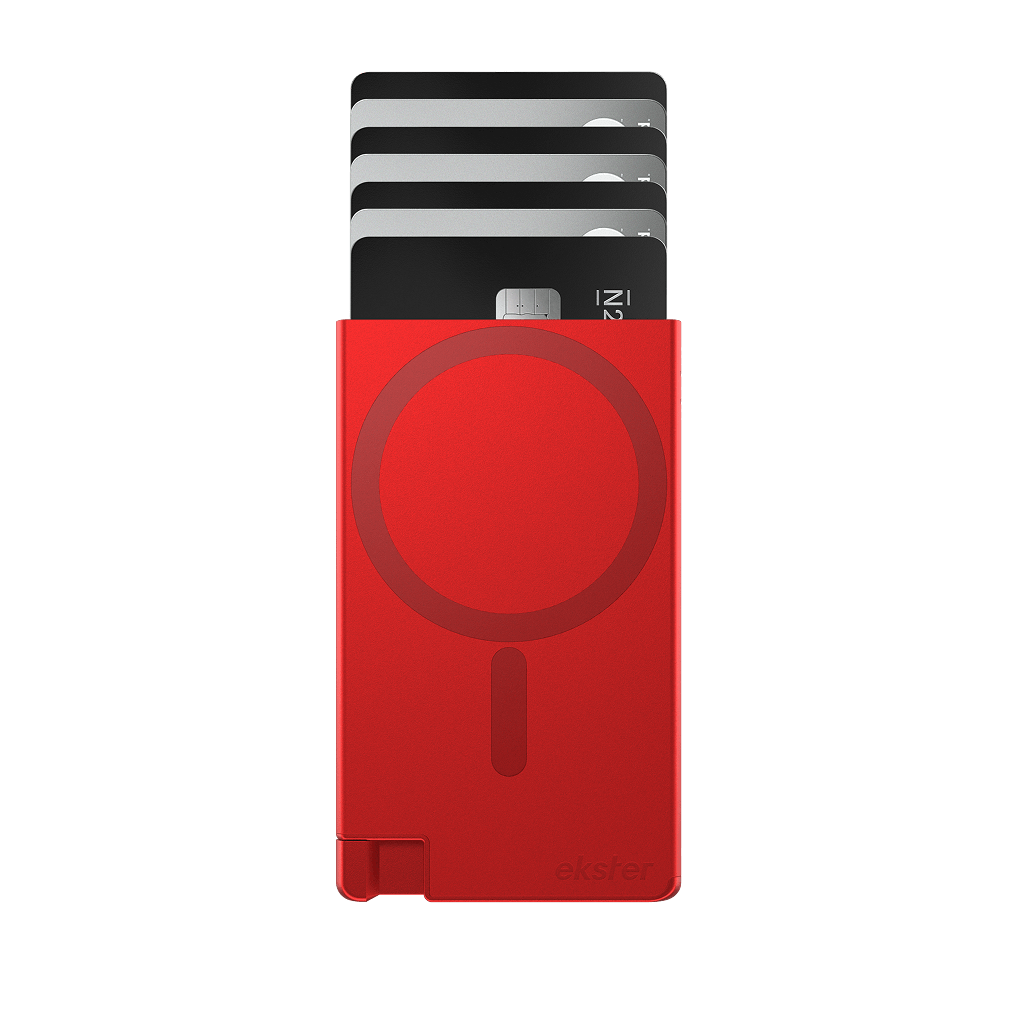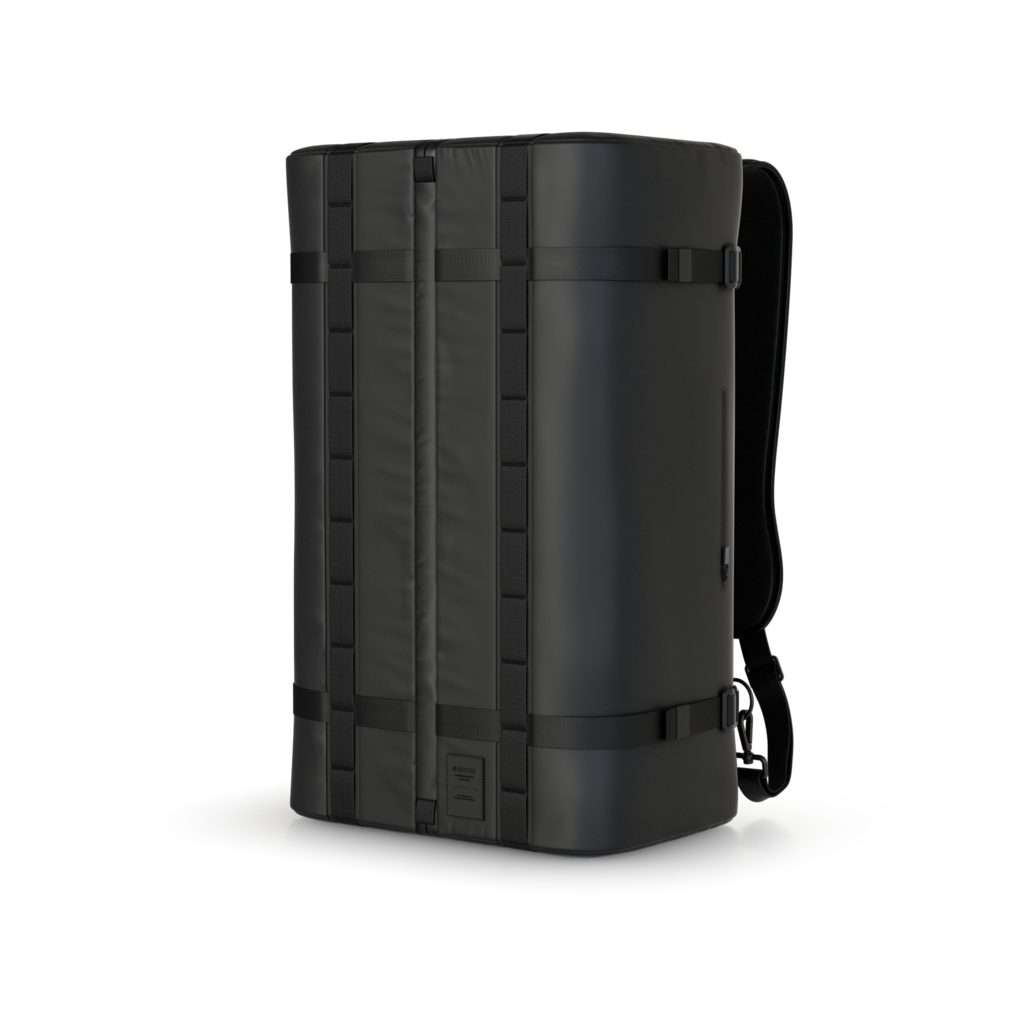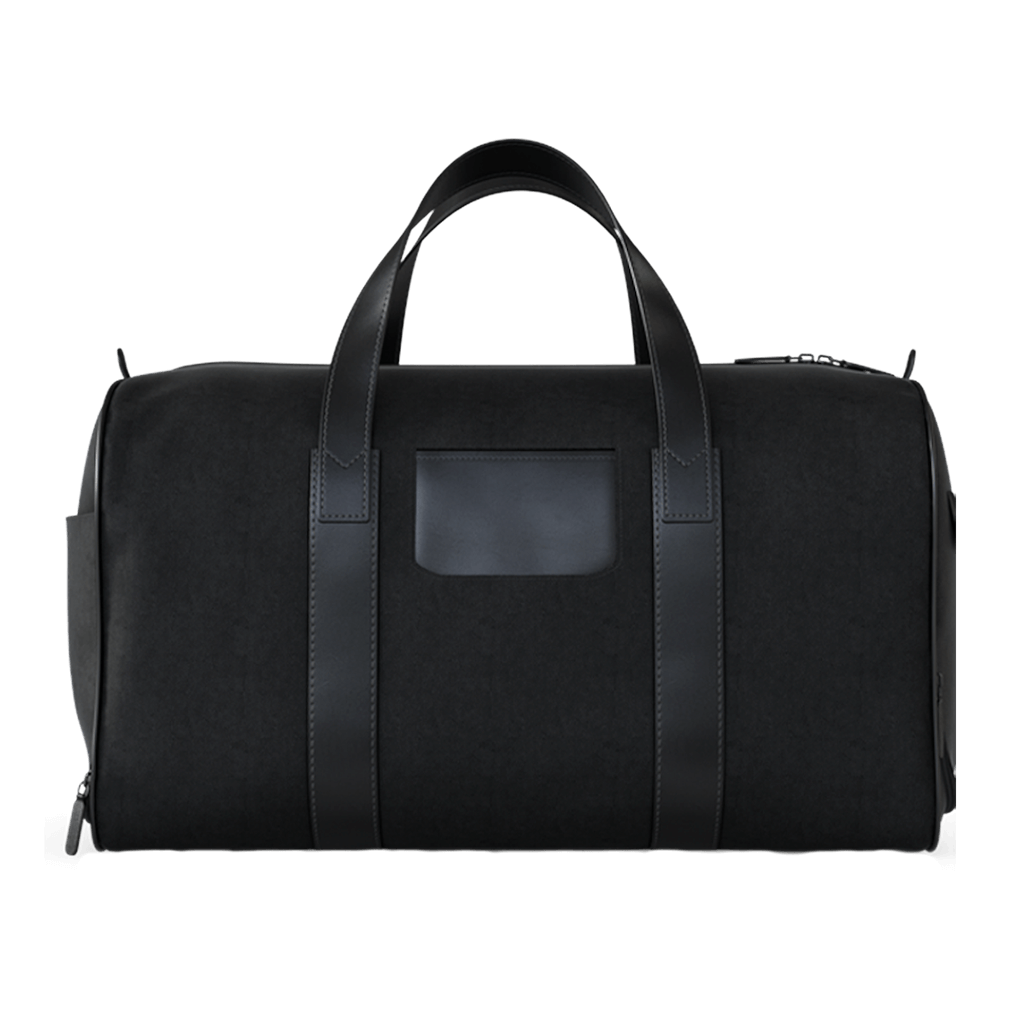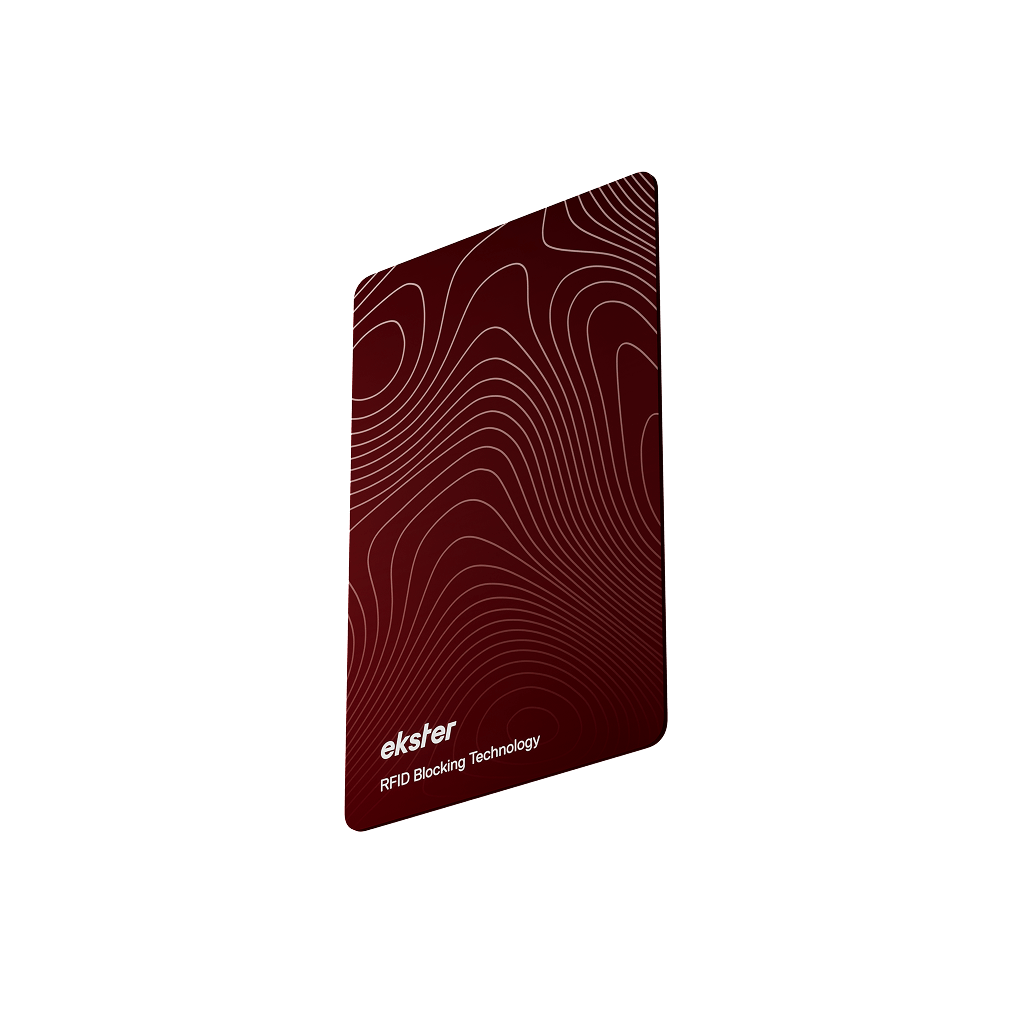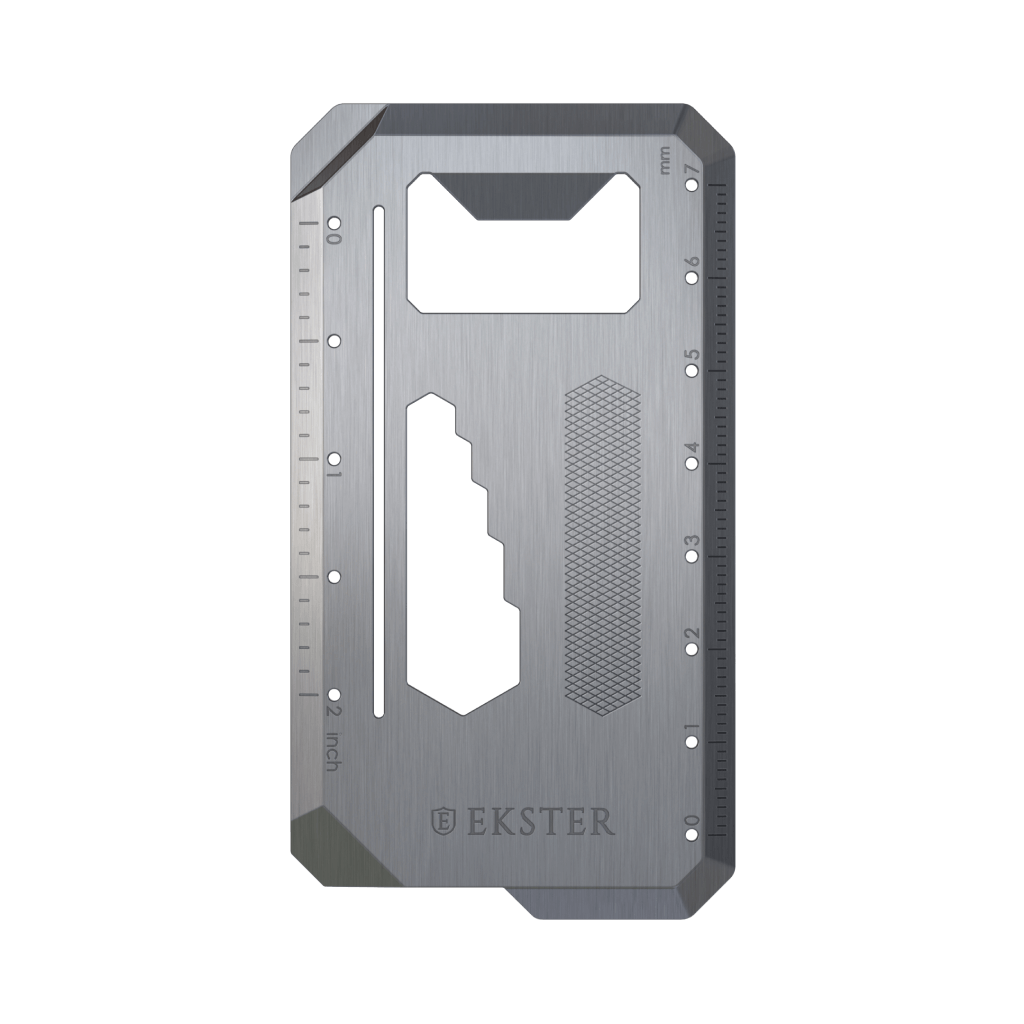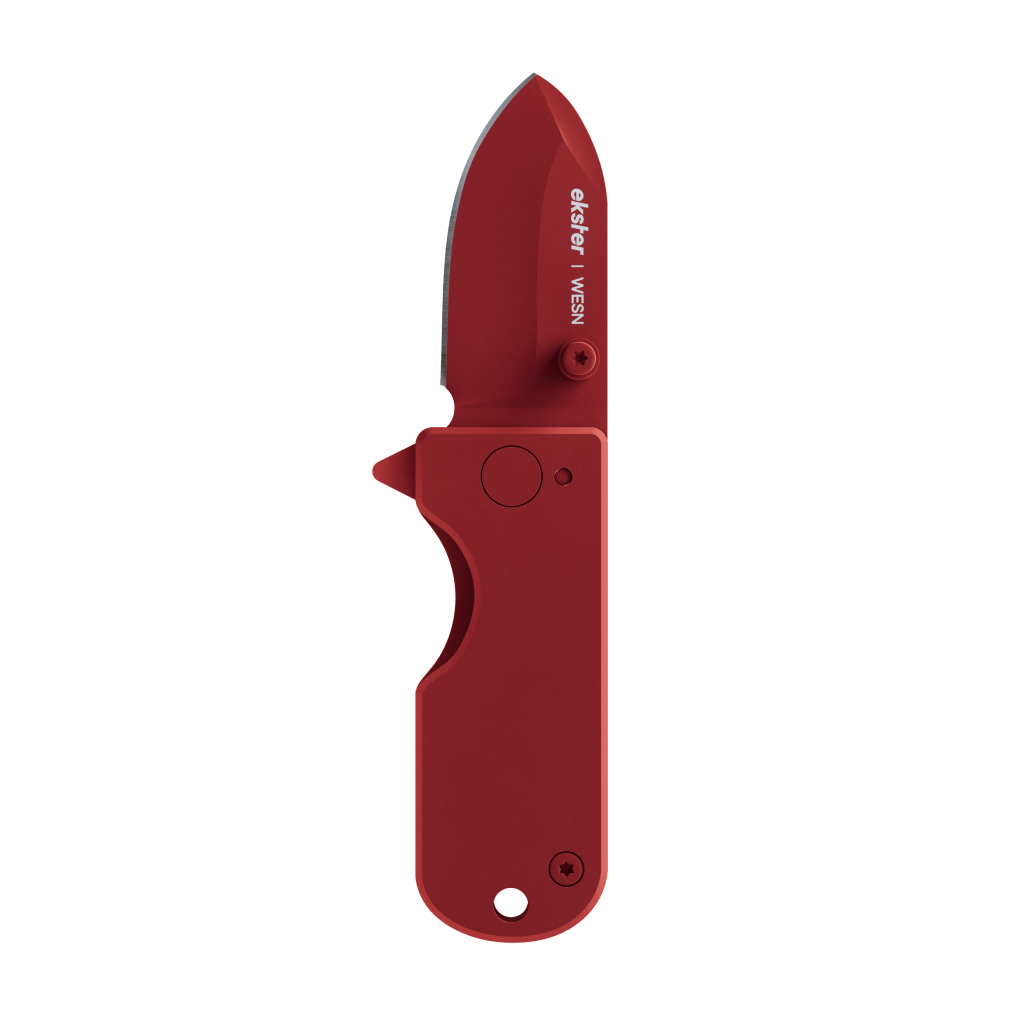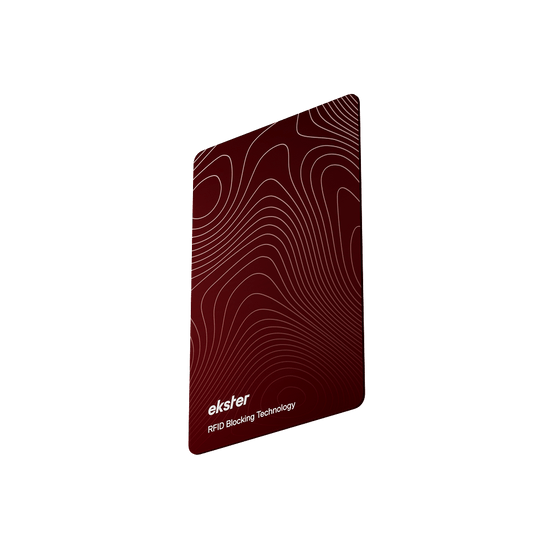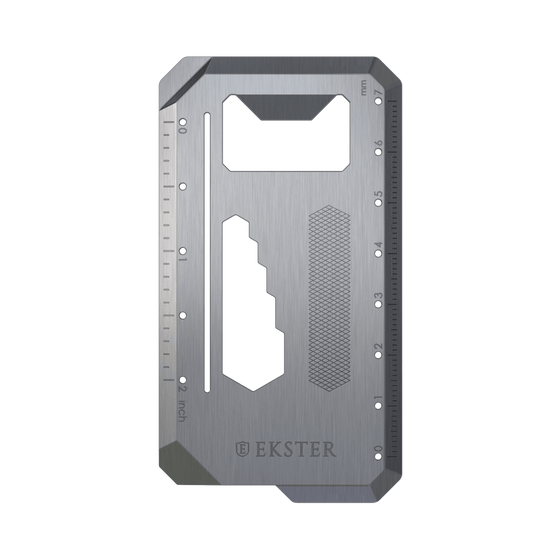From AppleSkin to Slim Trackers: The Tech Behind Ekster Gear
Ever peeked inside a wallet and realized it’s quietly running a tiny logistics operation? Your cards, your cash, sometimes a tracker secretly doing its thing. All of that is packed into something you shove in a pocket.
At Ekster, we obsess over that tiny system: the materials, the micro-mechanics, the trackers, and the sustainability choices that most people never see.
Below is a deeper look at the actual tech that makes our wallets work: what AppleSkin™ really is, why we use recycled aluminum, how our card ejection mechanism works, how our ultra-slim tracker cards function, where rPET shows up in our gear, and the sustainability checks we live by.
AppleSkin™ isn’t just “vegan leather”
People toss “vegan leather” around like it’s one thing. It isn’t. AppleSkin™ is a specific bio-based leather alternative made from apple pomace (peels, cores, and press residue) sourced from the food industry.

It’s been engineered to feel and age like high-end leather while avoiding the environmental costs of animal hide production. AppleSkin™ is certified as largely bio-based (the brand cites a USDA figure of ~66% bio-based content), and it’s free from the heavy solvents and toxic residues you get with cheap plastic-backed imitations.
Why that matters for you: AppleSkin gives you the sensory benefits of leather (soft hand, natural patina) without the same carbon and water footprint. It’s a practical, premium material choice; not virtue signaling.
The Ekster Wallet Pro’s AppleSkin edition keeps the click-to-access mechanism and internal metal parts you expect, but swaps the animal hide for this apple-based finish.
Metal where it counts: recycled aluminum in our cardholders
If you want your wallet to be slim, durable, and reliably clicky, plastic isn’t the answer. That’s why our Cardholder Pro and Wallet Pro use aluminum as a structural backbone. And not just any aluminum: 100% recycled 6061 aircraft-grade aluminum.

This gives a favorable strength-to-thickness ratio (thin but rigid), corrosion resistance, and a premium heft without virgin metal extraction. The use of recycled 6000-series aluminum means a much smaller embodied carbon footprint compared with new aluminum, while still allowing precision CNC machining and a zero-plastic assembly in some models.
The practical upside: the ejection mechanism (the satisfying fan of cards) is metal-on-metal, so it stays smooth for years. And aluminum is inherently recyclable again at the end of life. That’s circularity, not just a buzzword.
The engineering behind the click: our patented card ejection mechanism
There’s a reason people can’t stop clicking their Ekster wallets. That signature “pop” isn’t just satisfying… It’s the result of precision engineering.
Our patented card ejection mechanism uses a custom spring system housed inside an aerospace-grade aluminum chamber. With a single motion, your cards fan out smoothly, giving you instant access without the fumbling or bulk of traditional wallets.

Unlike other “click” wallets that rely on stiff sliders or cheap plastic parts, Ekster’s mechanism is tested for over 100,000 ejections. It’s built to survive years of daily use.
The design also protects your cards in more ways than one. The mechanism locks your cards firmly in place when not in use, keeping them secure even if you drop your wallet.
Combined with the RFID-blocking aluminum frame, it’s a pocket-sized vault designed for everyday efficiency. It’s that same metal precision that defines the rest of our ecosystem: fewer break points, smoother motion, longer lifespan.
The Finder Card: how ultra-slim tracking actually works
Short version: the Finder Card is credit-card thin, rechargeable, and built to play nicely with both iOS and Android ecosystems (Apple Find My® for iOS, Google Find My Device® for Android, depending on the Finder Card you choose).
It uses an internal rechargeable battery with a six-month charge life and recharges via a magnetic cable included in the box. The tracker uses Bluetooth to communicate with phones and networks; when outside your immediate Bluetooth range, the global network (Find My / partner networks) can help report its last seen location.

Notable tech bits people often miss:
- Rechargeable, not disposable: the Finder Card’s rechargeable battery avoids single-use cells that would otherwise be replaced and trashed. You top it up with the magnetic charger; no battery-swapping theatre.
- Thinness is a design trade-off: making a card this thin forces compromises in battery size and antenna design, which are solved by efficient power management and firmware design. That’s why you get months of standby rather than years like a coin-cell AirTag. In practice, six-month charge cycles are a sweet spot for a tiny, credit-card-sized tracker.
-
Network handoff matters: when used with Apple’s Find My network, your Finder Card can rely on millions of iPhones to help locate it when it’s not near your own phone. That’s how global “last seen” works without a SIM card. For Android users, Ekster’s Android Finder works with the Google Find Hub app to give similar crowd-powered locating features.
Real-world result: people have used Finder Cards to recover wallets left on trains, on bar counters, and inside taxis.
Those crowd-sourced location pings really do work in practice. Whereas the left-behind alerts and proximity ringer eliminate the panic of thinking you’ve lost your wallet.
RFID security: it’s physics, not hype
RFID-blocking isn’t a sticker; it’s electromagnetic shielding. Cards with RFID chips broadcast over short-range radio; a blocking layer (a thin metallic foil or metal body) forms a Faraday-like cage preventing external readers from powering and reading those chips.
Ekster’s use of aluminum and carbon fiber embeds such shielding in wallet designs so your contactless payment and ID chips can’t be casually skimmed while tucked away. It’s passive protection (no batteries, no software updates), and it just works. P.S. You’ll still tap or present your card normally when it’s out of the wallet.
Learn more about RFID skimming and how Ekster protects your cards and ID. And if you’ve never heard of an RFID card, find out why you might need one here.
rPET and the GRID Collection: recycled bottles turned into backpacks
We don’t only work with apple waste. The GRID Backpack and GRID Duffel are made from recycled PET (rPET) bottles.

It’s that plastic-to-fabric process that turns post-consumer bottles into polyester yarn, which is then woven into a weatherproof, durable 600D fabric used in the pack.
Despite its recycled origin, the rPET weave feels structured and smooth, built for years of daily use without sagging or tearing.
The goal is practical: a robust, water-resistant bag with far lower virgin plastic and oil demand than conventional polyester. It also means your traveling kit shares the same circular-material ethos as our wallets: less virgin material, more reuse.
B Corp and beyond: sustainability and accountability
Sustainability here isn’t a marketing filter. It’s a set of constraints that shapes all of our product choices. Ekster is a Certified B Corporation, which means the company’s social and environmental impact is audited against a standard that covers governance, workers, community, environment, and customers.
That blunts the classic “greenwashing” playbook: your material and supplier choices must be documented and defended. The sustainability page also lists our use of recycled metals, AppleSkin, rPET in bags, and efforts to reduce single-use packaging. Those elements are part of our product DNA, not a one-off collection.
Being a B Corp keeps us accountable. It’s how we make sure sustainability stays a requirement, not a mood.

Unexpected details customers rarely know
- Why aluminum over steel? Aluminum gives structural rigidity at a far lighter weight, and recycled 6000-series aluminum machines cleanly for precision ejection mechanisms. Steel would add weight and bulk.
- Modularity matters for durability: our modular add-ons (cash clips, coin pouches, tracker cards) mean users can replace or upgrade features without needing the whole other wallet. It’s an intentional move to add flexibility and extend product lifespan.
- AppleSkin certification: AppleSkin is marketed as bio-based and USDA-verified to a percentage. It’s not an all-natural product (it still uses binders/coatings for durability), but it replaces large amounts of petrochemical leather alternatives and animal leather impact. That’s the trade-off: less fossil-based content, more engineered durability.
-
Tracker security: the Finder Card relies on standard encrypted Bluetooth handshakes and the security architecture of Apple/Google networks for location handovers. It’s not GPS inside the wallet; it’s network-assisted location via nearby devices. That means privacy controls and network rules of those platforms apply.
All those micro decisions (materials, mechanisms, modularity) add up to the same mission: simplify your carry without compromise.
Tips for buying and living with a smarter, greener wallet
- If you want max longevity, pick a metal-internal cardholder (recycled aluminum) with a replaceable accessory rather than a full synthetic wallet you can’t mend. The Cardholder Pro checks all of the boxes.
- Want traceability? Add a Finder Card and pair it to your phone. Remember to charge it every few months. Magnetic charger included.
- Prefer less plastic in your carry? Choose vegan, AppleSkin, or rPET bag materials over polyurethane-heavy options. Remember to check for warranty and repairability.

In closing (TL;DR)
We create wallets, everyday carry accessories, and travel gear that do three things well:
- Protect your stuff (RFID blocking + durable materials + modular design),
- Help you find it (rechargeable tracker cards),
- And do less harm while feeling premium (AppleSkin, recycled aluminum, rPET).
Those choices aren’t adjectives on a sales page. They’re technical, measurable, and intentional.
FAQs
What is AppleSkin leather?
AppleSkin™ is a bio-based vegan leather made from apple pomace (the leftover skins and cores from apple processing), engineered into a durable, leather-like material with reduced environmental impact versus animal leather.
Is the Finder Card a sustainable tracker?
Yes, the Finder Card is rechargeable (magnetic charging cable included) and provides months of battery life per charge. It’s designed to last for years on end instead of ending up in a landfill after a few months of use like some other trackers.
What aluminum do Ekster wallets use?
Ekster’s metal Cardholder Pro uses recycled 6061 aluminum chosen for strength, lightness, and recyclability.
Are Ekster wallets RFID blocking?
Yes. Ekster wallets incorporate RFID-blocking materials in their design to prevent unauthorized card skimming while cards are stored inside.
What is rPET and where is it used at Ekster?
rPET (recycled PET) is polyester made from recycled plastic bottles. Ekster uses rPET in the GRID Backpack and related travel gear to reduce reliance on virgin polyester.
How does the Finder Card work with iPhone and Android?
On iPhone, it integrates with Apple’s Find My network for crowd-located last-seen positions. For Android, Ekster’s Android Finder uses the Google Find My Device network to provide similar crowd-sourced locating features. The card uses Bluetooth and a rechargeable battery to operate.






